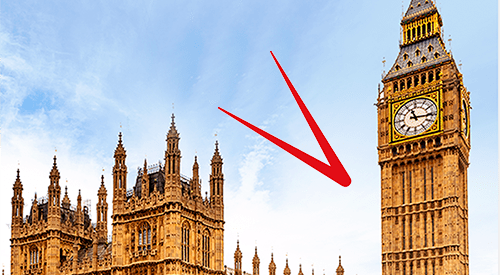Chancellor Jeremy Hunt set out plans to reduce the shortfall between receipts and public spending in his first formal fiscal event on 17 November 2022.
The Autumn Statement contained his response to rising interest rates, accelerating inflation and an economy entering recession, all factors that have adversely affected the public finances. This included tax increases that more than offset the tax cuts that survived from his predecessor Kwasi Kwarteng’s mini-Budget, as well as pencilling in significant cuts in public spending over the next five years compared with previous plans.
The Office for Budget Responsibility (OBR) published its latest economic and fiscal outlook, confirming a significant deterioration in the prospects for the public finances since it last officially reported in March 2022. The OBR’s updated forecasts indicated that rising interest rates would contribute to an extra £47bn a year of public spending by 2026/27, while a weaker economy would cause an additional shortfall of £28bn, of which £25bn arises from lower tax receipts.
In response, the Chancellor has pencilled in tax rises and policy changes amounting to £27bn by 2026/27 in an attempt to reduce the speed at which public sector net debt is rising. Despite that, the deficit in 2026/27 is now expected to amount to £80bn, up £48bn from the £32bn projected in the OBR’s forecast back in March.
The Chancellor was fortunate that the OBR was more optimistic than other forecasters about the ability of the UK economy to recover from the recession in a couple of years’ time.
Table 1 – Changes in the OBR forecast for the fiscal deficit
PSNBex |
2022/23 |
2023/24 |
2024/25 |
2025/26 |
2026/27 |
|---|---|---|---|---|---|
£bn |
£bn |
£bn |
£bn |
£bn |
|
Debt interest |
(41) |
(52) |
(27) |
(27) |
(47) |
Economy |
6 |
(7) |
(18) |
(29) |
(28) |
Support packages |
(37) |
(16) |
- |
- |
- |
Policy changes |
(6) |
(15) |
(3) |
14 |
27 |
Forecast changes |
(78) |
(90) |
(48) |
(42) |
(48) |
Mar 2022 forecast |
(99) |
(50) |
(36) |
(35) |
(32) |
Nov 2022 forecast |
(177) |
(140) |
(84) |
(77) |
(80) |
Table 1 sets out how the OBR forecast for the fiscal deficit has changed since March, with the deficit set to be £177bn in the current fiscal year (up £99bn), £140bn in 2023/24 (up £90bn), £84bn in 2024/25 (up £48bn), £77bn in 2025/26 (up £42bn) and £80bn in 2026/27 (up £48bn).
This includes the £58bn and £25bn effect of energy and cost-of-living support packages in the next two years, which are expected to cost £37bn and £16bn once indirect effects (principally more tax receipts and lower welfare spending) are taken into account.
Other policy changes come with a net cost of £6bn and £15bn to the public finances in the current and next financial year, principally because of the net effect of tax cuts that have survived from Kwasi Kwarteng’s mini-Budget. However, this is expected to reverse by 2024/25 as fiscal drag brings more people into paying tax or into paying tax at higher marginal rates, and spending plans are scaled back.
Table 2 - Changes in the OBR forecast for public sector net debt
PSNDex |
Mar 2023 |
Mar 2024 |
Mar 2025 |
Mar 2026 |
Mar 2027 |
|---|---|---|---|---|---|
£bn |
£bn |
£bn |
£bn |
£bn |
|
Larger deficits |
(78) |
(168) |
(216) |
(258) |
(306) |
Opening position |
(43) |
(43) |
(43) |
(43) |
(43) |
Quantitative tightening |
(3) |
(22) |
(32) |
(30) |
(38) |
Financial transactions |
(6) |
(3) |
(1) |
(9) |
(5) |
Forecast changes |
(118) |
(236) |
(292) |
(340) |
(392) |
Mar 2022 forecast |
(2,453) |
(2,516) |
(2,533) |
(2,469) |
(2,480) |
Nov 2022 forecast |
(2,571) |
(2,752) |
(2,825) |
(2,809) |
(2,872) |
Table 2 illustrates what this means for public sector net debt excluding nationalised banks (PSNDex), the headline measure for debt. This is primarily driven by the much larger deficits forecast over the next five years, together with a higher debt opening position on 1 April 2022 than the OBR was expecting back in March.
Debt is also expected to increase as the Bank of England unwinds its quantitative easing position in a process known as quantitative tightening, with the OBR forecasting that the Bank will sell around £80bn a year of the gilts it owns. In the fiscal numbers, where gilt liabilities are reported at nominal or redemption value (in contrast with the amortised cost basis used in the IFRS-based Whole of Government Accounts) this is expected to result in an increase in reported debt as gilts are sold at a discount to nominal value.
Financial transactions, principal funding for government lending such as for student and business loans as well as working capital movements, are not expected to change significantly from the previous forecast.
Table 3 – OBR forecast for the deficit (after changes) and public sector net debt
PSNBex |
2022/23 |
2023/24 |
2024/25 |
2025/26 |
2026/27 |
2027/28 |
|---|---|---|---|---|---|---|
£bn |
£bn |
£bn |
£bn |
£bn |
£bn |
|
Receipts |
1,005 |
1,059 |
1,096 |
1,122 |
1,159 |
1,202 |
Expenditure |
(999) |
(1,014) |
(1,026) |
(1,054) |
(1,077) |
(1,105) |
Interest – index-linked |
(72) |
(30) |
(1) |
3 |
(14) |
(18) |
Interest – other debt |
(48) |
(79) |
(82) |
(80) |
(82) |
(84) |
Net investment |
(63) |
(76) |
(71) |
(68) |
(66) |
(64) |
Forecast deficit |
(177) |
(140) |
(84) |
(77) |
(80) |
(69) |
as % of GDP |
7.1% |
5.5% |
3.3% |
2.8% |
2.9% |
2.4% |
Forecast net debt |
(2,571) |
(2,752) |
(2,825) |
(2,809) |
(2,872) |
(2,963) |
as % of GDP |
101.9% |
106.7% |
105.8% |
101.1% |
100.0% |
99.3% |
Underlying debt / GDP |
89.9% |
95.9% |
97.2% |
97.6% |
97.6% |
97.3% |
Table 3 summarises the OBR forecast for the fiscal deficit after the above changes, extended to 2027/28 to provide a full five years of forecast from the start of the coming financial year on 1 April 2023.
Receipts are expected to rise from £1,005bn in the current financial year to £1,202bn in 2027/28, while expenditure excluding interest is expected to rise from £999bn in 2022/23 to £1,105bn.
Interest is expected to fall from £120bn this year to £77bn in 2025/26, primarily as the effect of inflation on index-linked debt is expected to fall and then reverse from its peak in the current fiscal year. Interest is expected to increase thereafter as a growing level of debt adds to interest charges.
Net investment is expected to rise next year by around £5bn after adjusting for a one-off credit in the current year relating to student loans. Investment is then expected to fall from next year onwards, highlighting how spending restraint is likely to be borne from savings in capital programmes – at least assuming the plans remain unchanged following the general election expected in 2024.
With the forecasts indicating that the government will be unable to meet its previous commitment to a current budget surplus, the Chancellor has announced that he plans to target an overall fiscal deficit of no more than 3.0% of GDP by the fifth year of the forecast period – in this case 2027/28 when the OBR forecast is for 2.4%.
Chancellor Jeremy Hunt is also replacing the government’s principal fiscal rule of aiming for a falling underlying debt to GDP ratio by the third year of the forecast period. He has not been able to meet this objective and instead is targeting for this metric to start falling by the fifth year of the forecast. Underlying debt for this purpose excludes approximately £110bn of net incremental debt from the Bank of England’s quantitative easing programme of gilts that is expected to unwind as these gilts are sold, together with £190bn or so of Bank of England’s Term Funding Scheme loans that are expected to be repaid over the next four years.
Table 4 – Year-on-year real-term changes in receipts and spending
PSNBex |
2023/24 |
2024/25 |
2024/25 |
2026/27 |
2027/28 |
|---|---|---|---|---|---|
% |
% |
% |
% |
% |
|
Receipts |
+2.1% |
+2.2% |
+1.9% |
+2.1% |
+1.8% |
Expenditure |
-1.6% |
-0.1% |
+2.1% |
+1.1% |
+0.7% |
Interest |
-12.7% |
-25.0% |
-7.0% |
+22.3% |
+4.9% |
Net investment |
+16.8% |
-7.4% |
-4.3% |
-4.5% |
-5.2% |
Table 4 adjusts the numbers presented in Table 3 for the effects of the GDP deflator, the ‘whole economy’ measure of inflation used for measuring the size of the economy. This is expected to be 4.9%, 3.2%, 1.3%, 0.5%, 1.2% and 1.8% respectively over the six years to 2027/28. This contrasts with the OBR’s forecast for consumer price inflation of 10.1%, 5.5%, 0.0%, -1.0%, 0.8% and 1.8% over the same period.
After adjusting for inflation, receipts are expected to increase by an average of 2.0% over the five years to 2027/28, while expenditure excluding interest increases by an average of 0.4%, interest by an average of -4.8% and net investment by an average of 1.3%.
The reduction in interest costs reflects the swing in inflation on index-linked gilts, with interest on fixed-rate gilts and other debt rising over the forecast period as although interest rates are expected to fall back, the total amount of debt is growing.
The change in net investment is flattered by a distortion in the current year from alterations to the terms of student loans that inflates the real term increase in 2023/24 by 12.7%. If this is excluded, net investment is expected to fall by an average of 3.6% over the five years to 2027/28.
Conclusion
Public sector net debt is now forecast to reach £2,963bn or almost £3.0tn by March 2028. This is £590bn higher than the £2,373bn reported at March 2022, £1,143bn higher than the £1,820bn reported for March 2020 at the start of the pandemic, and £2,396bn higher than the £567bn reported for March 2008 before the financial crisis caused borrowing to increase dramatically.
The legacy of the huge amounts borrowed over the course of a series of fiscal crises has severely weakened the public finances, at the same time as spending on public services has been constrained by policy decisions and economic growth has been weak.
The Chancellor will be hoping that the economy performs at, or even better than, the OBR forecasts, but he will be acutely aware that this is not a given and the public finances could easily be pushed off course by events.
Autumn Statement
On 17 November 2022, the Chancellor delivered the Autumn Statement. Read ICAEW's analysis and reaction.





